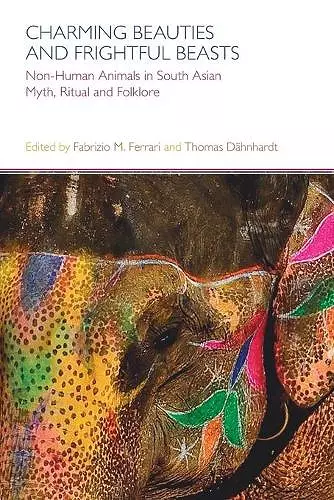Charming Beauties and Frightful Beasts
Non-Human Animals in South Asian Myth, Ritual and Folklore
Fabrizio M Ferrari editor Thomas Dähnhardt editor
Format:Paperback
Publisher:Equinox Publishing Ltd
Published:15th Oct '13
Currently unavailable, and unfortunately no date known when it will be back

Discussions on non-human animals, other-than-human persons and religion originally emerged within the context of Christian theology, eco-theology and Western-based environmentalism. In response to that, and by adhering to post-modern discourses on, for instance, indigeneity, mimicry and hybridity, the volume explores South Asian cultural manifestations and aspects of localised knowledge in relation to the construction and the Otherisation of the concept of body and behaviour in non-human animals. The study of non-human animals as other-than-human persons (actual animals, but also animal-spirits, animal deities, etc.) has marked a significant shift in the ethics/politics of the academic study of religion. The chapters in this book investigate how South Asian religions, with their sacred narratives, ritualised practices and popular performances, bear witness to the active presence of non-human animals as both culture makers/bearers and symbols of spirituality. Further to that, with bourgeoning debates on religion, indigeneity, eco-theology and environmentalism, the volume urges for a consolidation and promotion of an analysis of the twofold epistemic violence exerted towards animals as subaltern to human animals and to animals in Western and Christian traditions. The book is divided into fifteen chapters, each dealing with non-human animals and the concept of animality in different South Asian traditions, or various aspects of the same tradition. The structure of the book reflects that of what is probably the most popular collection of folk tales on animals in South Asia, the Pancatantra. Like the original text, the volume is divided into five books (tantras) whose single stories (our chapters) act as sub-strings inscribed in larger narrative frames. As in the original Pancatantra, the principal themes of each book are signalled by key words which provide the link between successive narrative cycles. Such a structural arrangement creates the backbone for the main body of the book allowing for an articulate, clear and reasoned discussion of single themes, such as 1) non-human animals as divine portents in situations of imbalance; 2) non-human animals as restorers of order and symbols of cultural identity; 3) non-human animals as exemplary beings and spiritual teachers in sacred narratives; 4) non-human animals as symbols of love and object of human reverence; 5) non-human animals as portents symbolising the life cycle, including its inevitable end. In the conclusion, the editors summarise what has been achieved with this academic 'narrative' and reflect constructively on its outcomes as well as future developments with respect to past and present scholarship.
ISBN: 9781908049599
Dimensions: unknown
Weight: unknown
288 pages